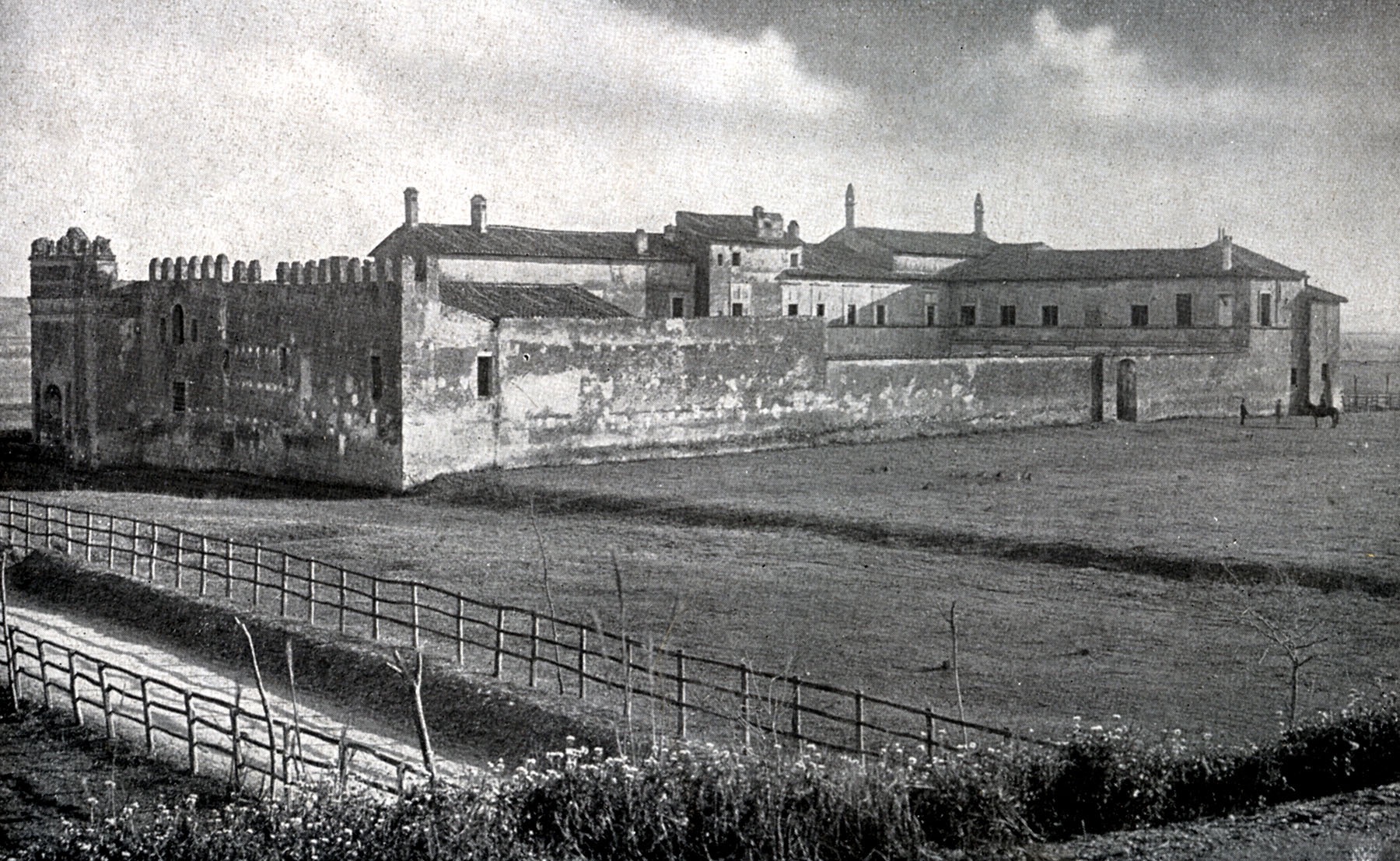
On Saturday I made good on a promise to myself: I went for a bike ride with a bunch of strangers. It was great fun, and while I didn’t make any friends, I did chat to a couple of people and took those first important steps.

I had been eying up a local organisation, Ruotalibera, which I would translate, idiomatically, as Freewheeling. It is the Rome associate of FIAB, the main Italian cyclists’ organisation, which does a lot of campaigning on behalf of cyclists. Ruotalibera organises excursions, training and all sorts of other things, and with a bright (but cold) day forecast, I joined online and signed up for a ride to the Castello della Magliana, about halfway between here and the sea at Fiumicino.
That meant getting my “proper” bike — which I haven’t used for about six months — up and running. I could have done the ride on the Brompton, but I didn’t know in advance how rough the rough sections would be, so it seemed unwise. That’s when I discovered that my lovely footpump — at least 20 years old — was no longer capable of attaching properly to the valve. Off to Decathlon, which surprised me by having a €7 replacement valve attachment thingie rather than a replacement pump at €25, so that was nice. Pumped up the tires on Friday, did a bit of adjusting, and hoped that they would still be inflated the following morning.
They were, and so off I shot down the hill, colder than a well-digger’s arse, to the meet-up. Everyone was very friendly, though there was a lot of standing around waiting for late-comers, gathering subscriptions (€3, what a bargain) and generally chatting. The tour leader was very welcoming, the other people not so much, but I don’t blame them. Many were clearly old hands and knew one another well. Others were, like me, newcomers and strangers. And off we went.

The route was one I knew well because I used to do it quite often, especially when I lived down on the flatlands, but along the way there were lots of changes. Most of the looming Miscanthus grass had been bulldozed out of the ground and generally the landscape was a lot cleaner than I remembered it. With a guide who knew the route, I was shown things I had never noticed before, like a Roman bridge hidden under one of the main roads encircling Rome.

The going is essentially flat, mostly alongside the river, with plenty of interesting things to see even though, in a group, it was impossible to stop and take pictures. There are little paddocks with goats and horses, rustic shacks littered with old cars. The horse-racing track, which when I first arrived was still operational, is now completely abandoned. Runners, walkers and other cyclists share the path amicably. The sun shone, the sky was blue, I had warmed up a bit. All good.
In the old days, I would stop where the path reaches the Grande Raccordo Annulare and turn back, but now we continued, under the GRA and onto a rougher path that took us past a Sheraton hotel and golf course to the Parco de’Medici, an agglomeration of headquarterish buildings including that of the World Food Programme and our destination — the John the Baptist hospital of the Knights of Malta. Well, not the hospital itself, but the Castello della Magliana, which houses some of the hospital administration.

Bikes were parked, neatly, and we trotted off to be informed by an older gent with a binder full of historic images, maps and the like. I didn’t follow the entire story by any means, but I did gather that this area, near the confluence of the Magliana and the Tiber, was mostly swampy ground where aristos from Rome were wont to hunt. It seems to have been acquired originally by the Dominican monks of Santa Cecilia in Trastevere some time in the 11th century. Around about 1480, popes starting with Sixtus IV built and rebuilt the hunting lodge. Sangallo and Bramante — architectural heavy hitters of the Renaissance — were involved in its design and Raphael and Michelangelo in its later decoration, but we didn’t see any of that. Leo X is credited with transforming it from a hunting lodge to a fortified mini-castle, to protect the surrounding area and Rome upstream. He also preferred literature, musical concerts and theatricals over hunting.
There was a bit of agriculture too, but malaria kept getting in the way, and by the end of 16th century the whole area was more or less forgotten. There was some contractual hanky-panky that I couldn’t really follow, but it seems the monks still owned it and rented out the castle and the land until, in 1959, the Knights of Malta took it over and restored the buildings.

Lunch in the carpark, basking under the sun, and then we cycled back, including the horribly laborious climb up the Viale dei Quattro Venti to home; weary, satisfied, and slightly better informed.
Next week’s ride is out in the countryside, carried there by train, but I have an engagement in the evening and cannot risk not getting back in time.
Webmentions
Webmentions allow conversations across the web, based on a web standard. They are a powerful building block for the decentralized social web.
If you write something on your own site that links to this post, you can send me a Webmention by putting your post's URL in here:
Webmentions
Comments